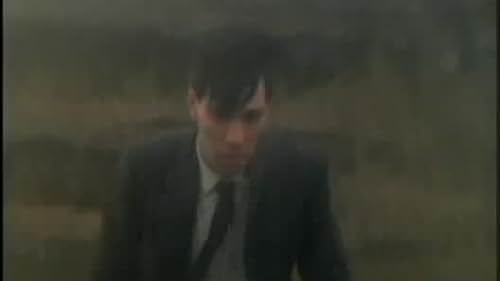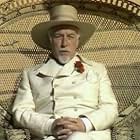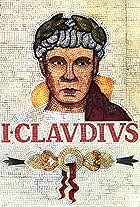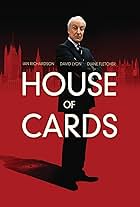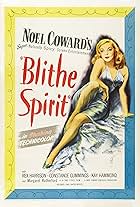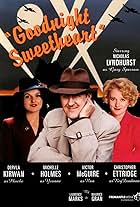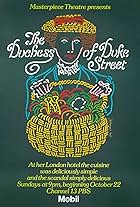A traumatized former WWI soldier becomes a teacher at an elite English boarding school, finding purpose in mentoring students while navigating class divides between his working-class roots a... Read allA traumatized former WWI soldier becomes a teacher at an elite English boarding school, finding purpose in mentoring students while navigating class divides between his working-class roots and the prestigious institution.A traumatized former WWI soldier becomes a teacher at an elite English boarding school, finding purpose in mentoring students while navigating class divides between his working-class roots and the prestigious institution.
- Nominated for 1 Primetime Emmy
- 3 nominations total
Storyline
Did you know
- TriviaThe filming at the Milton Abbey School in Dorset, which served as Bamfylde in the series, took place during actual school term. The "real" students at the school happily mixed with the cast and crew and many of the boys who appear in the series are genuine schoolboys.
- GoofsSeveral times, the length of David's tie changes between indoor and outdoor scenes in the same sequence. Example: Episode 8 opens with David walking back to Bamfylde early in the morning. His tie ends well above his belt. When David arrives at his house and talks with Molyneux, David's tie extends below his belt. From there, David goes outdoors to meet Algy and Brigadier Cooper, and his tie is once again short.
- Quotes
[talking about the death of Alcock]
Howarth: That's that, and I hope to God nobody asks me to comment. The thing I find hardest to tolerate is hypocrisy, especially when it takes the form of a sentimental regard for the dead just because they *are* dead. To hear some people talk, you'd think dying was limited to the chosen few.
- ConnectionsFeatured in The 35th Annual Primetime Emmy Awards (1983)
The miniseries is done in thirteen parts, each just under an hour long, as a co-production of the BBC and the Australian Broadcasting Corporation. It was filmed in a real public school, Milton Abbey School in Dorset (not too far from part of the country where the mythical Bamfylde School resides), and many of the 'extras' in school shots are actually school boys of the Milton Abbey School. The settings didn't have to be changed too much to accommodate the inter-war period décor, and of course the architecture for the most part was hundreds of years older.
However well done the sets and images are, this is still a teleplay about relationships and the coming of age, not just of the boys in the school, nor even of the lead character, Mr. Powlett-Jones, but really of the whole of society. The inter-war period in Britain was a fascinating time of societal development, particularly in terms of politics. Delderfield introduces this as an ever-present but never centre stage idea through the dealings of Powlett-Jones, son of a Welsh coal mining family, some of his out-of-school relationships, and the clash that this inevitably sets up with the privileged corps of boys at the school.
In the first episode, David Powlett-Jones has just returned from the trenches in the first world war, wounded both physically and spiritually. He is suspicious of the job offer at this upper-class bastion, but the gentle understanding of the headmaster, Algy Herries, encourages him to stay. His relationships with the other teachers are a fascinating study, particularly the gung-ho-warrior type Carter (whose not-always-disabled knee seems to have kept him out of the war) and the cynic-with-a-good-soul Howarth, who becomes Powlett-Jones' best friend over the course of their life together at Bamfylde.
Howarth chides Powlett-Jones at one point about the kind of monastic life that one can fall into at a remote school such as Bamfylde.
Howarth: Some men can live the celibate life. I don't fancy you're one of them. David Powlett-Jones: What did *you* do about women all these years? Howarth (pausing, smiling): Your appetite for sordid revelations never ceases to astonish me.
Howarth reveals some of his indiscretions (remember, this is post-Victorian England, and the revelations, such as they are, would be considered exceedingly mild by television standards today). Powlett-Jones over the course of his twenty years at Bamfylde ends up with three primary loves; Beth, a young wife who dies early; Julia, someone not to be tied down to a school (or even the island of Britain), but keeps regular if long-separated contact with David over time; and Christine, the failed Labour candidate who becomes his second wife, taking on a role at the school as well, not the least of which is to remind the now-headmaster Powlett-Jones that there is a world outside the still-privileged halls of Bamfylde.
The teleplay is exceedingly well done, with the acting and the writing supporting each other in such a way to give real insight into the psychological make-up of the characters. John Duttine played David Powlett-Jones with a good amount of passion; however, I am torn between Frank Middlemass (as Herries) and Alan MacNaughtan (as Howarth) as to who my favourite actor is in the series. Both bring so much to their roles, and I can see myself in each of them in many ways more so than I can identify with Powlett-Jones. For the women, David's first wife Beth is played by Belinda Lang; Julia is played by Kim Braden (trekkies may recognise her from bit parts both in Star Trek film and series work); Susan Jameson plays Christine, David's second wife (fans of 'Coronation Street' may recognise her from that show). Each of the three is very well suited for their respective roles - Lang plays the young, optimist; Braden plays the worldly, ambitious but sensitive soul; Jameson plays the idealist who comes down to earth, managing to keep her ideals intact.
The play does a good job also of keep the boys from becoming a faceless, anonymous mass (a decided danger, given their uniformity in dress as well as age). There are particular boys who stand out, but one gets the sense from the watching that they are all individuals, and treated as such, both by the careful and caring headmasterly type Harries and Powlett-Jones, as well as the cynical Howarth (and even by the more scathing of the teachers, whose style is no longer in vogue).
The situations are credible, interesting, and instructive. The characters are fully formed and worthwhile. The production values are not to cinematic standards, but hold up very well over time (the lack of lavishness befits the nature of the school and the nature of the time as well).
This remains one of my favourite series of all time. The DVD has few extras, but among them are photographs, background information both on the school and on Delderfield, and the lyrics to the school song (which opens each episode, sung by the congregation of boys), by Kenyon Emrys-Roberts: 'Look ahead to a life worth living, Full of hope, full of faith, full of cheer,...'
- kurt_messick
- Dec 20, 2005
- Permalink
- How many seasons does To Serve Them All My Days have?Powered by Alexa
Details
- Release date
- Country of origin
- Language
- Also known as
- Una vida a su servicio
- Filming locations
- Milton Abbey School, Blandford, Dorset, England, UK(Bamfylde School)
- Production companies
- See more company credits at IMDbPro
Contribute to this page









